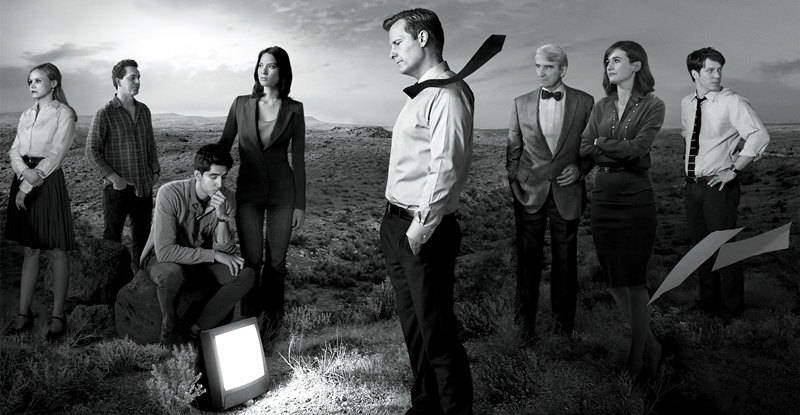Watching “No,” the 2012 Academy Award nominee for Best Foreign Language Film, it’s hard not to think of the film that won big that year. Like “Argo,” this drama from Pablo Larrain is based on a true story about what happened behind the scenes of a volatile political situation, and like “Argo” the focus is on a maverick whose demeanor is just the opposite of volatile. In fact, Mexican actor Gael García Bernal has that bearded, intense-yet-calm look that Ben Affleck could have patented.
Bernal plays René Saavedra, a marketing/advertising wiz kid who embraces the flashy gimmickry of product campaigns mounted by his U.S. and European counterparts. Except that for him, this time, the product is revolution.
In 1988, facing international pressure and scrutiny from the United Nations and United States, Chilean military dictator Augusto Pinochet decided to call for a plebiscite (referendum) on his presidency. Vote yes and the people will have reinstalled him for another eight years and legitimized his rule to silence international critics; vote no, and the dictator is gone. Of course, neither Pinochet’s people nor the opposition thought it would be a fair election, and intimidation is rampant. At one point we see a No rally broken up by police with batons and tear gas.
Saavedra is reluctant to take on the job, but not because he’s afraid. Like any artistic-minded professional, he wants creative control—something that, with so much at stake and with so many people involved, proves to be impossible.
Complicating matters is that his boss at the agency where he still shows up for work every day has been recruited to head the Yes campaign, and he remains a loyal Pinochet supporter. Lucho Guzmán (Alfredo Castro) tries to get Saavedra to see that he lives as life of privilege, that he has a sports car, money, and, most importantly, that he’s been left alone. That’s no accident. It’s the result of his position, and the fact that his boss just happens to be politically connected.
On the far left is Saavedra’s estranged wife (Antonia Zegers), who thinks that the campaign he proposes doesn’t go far enough, and that the 15 minutes TV time per day leading up to the election that Pinochet’s government has given them should be spent protesting more loudly. She’s convinced the vote will be fixed, and that her husband is just a pawn in Pinochet’s scheme to retain power.
Director Larraín opted to use videotape (3/4” Sony U-matic magnetic tape) to film the entire movie with a vintage 1980s camera, so the whole thing has the feel of old TV news footage. Frequent hand-held cameras reinforce a sense of guerilla filmmaking that’s compatible with the subject matter.
Naturally Saavedra butts heads with political leaders and other creative types because he’s fully bought into the concept of communication as salesmanship. To him, the revolution is a product, like the microwaves he’s been promoting, and what is said is less important than how it’s said and what images are used. Not everyone is a fan of the film. Shortly after it opened in Chilean theaters, former government officials complained that the TV campaign was just one aspect of a complex series of events that led to Pinochet’s ouster. It’s worth noting that even the former director of the No Campaign called the film “a gross oversimplification that has nothing to do with reality,” he told The New York Times. “The idea that, after 15 years of dictatorship in a politically sophisticated country with strong union and student movements, solid political parties and an active human rights movement, all of a sudden this Mexican advertising guy arrives on his skateboard and says, ‘Gentlemen, this is what you have to do,’ that is a caricature.”
Even without this knowledge, “No” does seem to take an as-the-crow-flies approach. It also drags a bit at 118 minutes, and it’s not because of subplots that show Saavedra from other angles. It’s frankly because some of the scenes are just a little long. Yet, every time the film seems in danger of bottoming out, behind-the-scenes looks at these 1980s “mad men” save the day. The election cycle was to be composed of 27 days leading up to the vote, with each side getting 15 minutes of airtime. Of course, Pinochet’s people aired the opposition in the wee hours of the morning, and with a state-run TV station virtually every other hour was Pinochet time. But as the two sides face off with their jazzy TV political messages, it’s like watching a modern-day David versus Goliath . . . with a Madison Avenue slingshot.
Accurate or not, hokey or not, the ad campaigns are the most interesting parts of the film—especially since side plots involving Saavedra’s family life are underdeveloped. For all its flaws, “No” succeeds because the marketers sell the audience, too.
Video:
Given the videotape, the presentation is a little rough, but because of the historic nature and the near covert operation, it feels right. “No” is presented in 1.40:1 anamorphic widescreen, and the level of edge detail and color saturation is commensurate with the limitations of videotape.
Audio:
The audio is a Spanish Dolby Digital 5.1 with subtitles in English (default) or French. Surprisingly, Larraín makes full use of the effects speakers, and not just during demonstrations or military responses. There’s one moment where a point-of-view shot implies that Saavedra is sitting in the middle of his circular train tracks when someone enters the room, and for several rotations we hear the train move circles around us. It’s actually pretty cool.
Extras:
Larraín and Bernal team up for a commentary in English, with both men offering a relaxed and often humorous account of the filming and the relationship of the film to actual events. It’s above average, as commentary tracks go. The only other bonus feature is a 10-minute clip from a Q&A session following a screening of the film at the 2012 Toronto International Film Festival.
Bottom line:
“No” won the Art Cinema Award at Cannes, no doubt for the inventive use of videotape and Larraín’s fly-on-the-wall camerawork. It’s a subtle, not preachy film, whose simple political message gets complicated by and often overshadowed by issues surrounding the manipulation of public opinion through marketing campaigns. I can see this film turning up in quite a few public relations classes. And for the home theaters? It’s another nice behind-the-scenes political drama.


